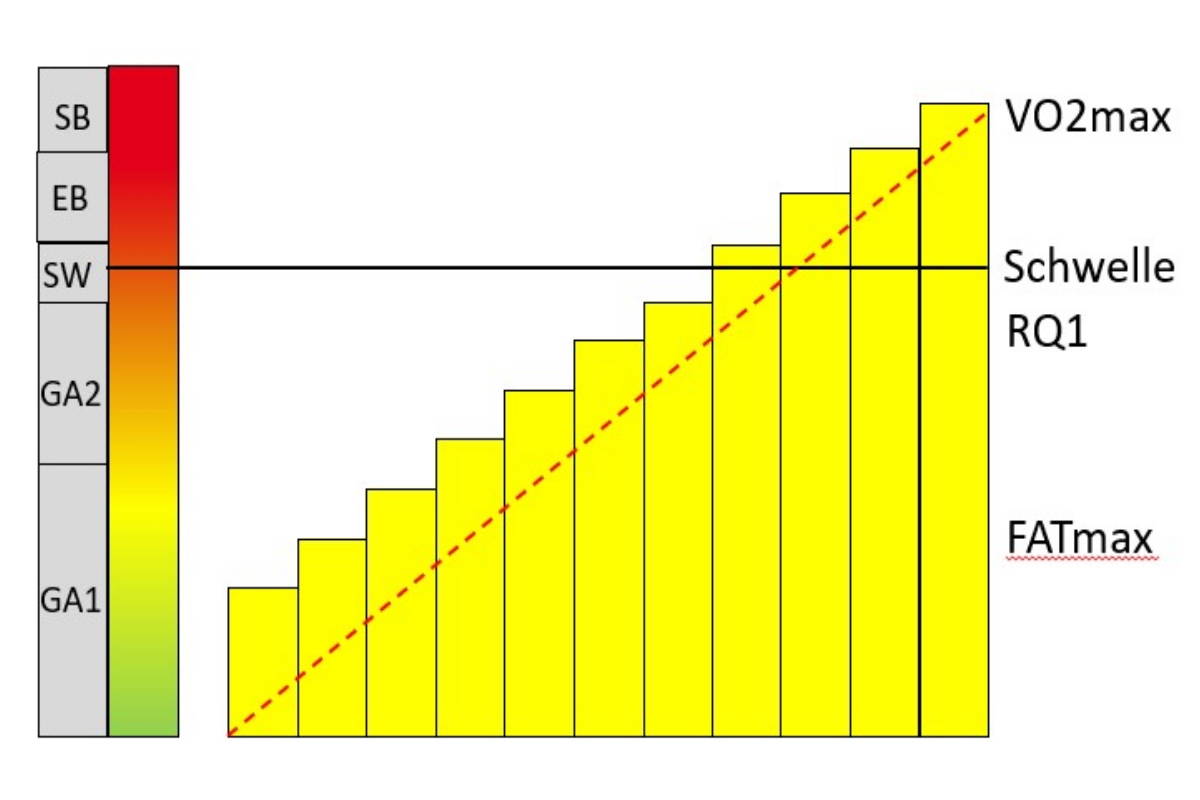Die eigenen Trainingsbereiche kennen und verstehen ist die wichtigste Voraussetzung für eine gezieltes Trainingssteuerung. Nachhaltiger Formaufbau kommt erst durch die gezielte Ansteuerung dieser Bereiche zustande, in denen dann die gewünschten Effekte zum Leistungsaufbau stattfinden. Wir zeigen euch, was hinter den Trainingsbereichen steckt und darüber hinaus die passenden Trainingsmethoden dazu.
Darum ist das Training in unterschiedlichen Bereichen so wichtig
Das Ziel von sportlichem Training ist auf die Verbesserung des körperlichen Funktionszustands ausgerichtet. Auf jede Trainingseinheit reagiert unser Körper mit anatomischen und physiologischen Anpassungsprozessen. Die Prozesse finden auf ganz unterschiedlichen Ebenen statt und werden erst durch bestimmte Belastungs- und Trainingsformen aktiviert. Beispiel: die Verbesserung der maximalen Sauerstoffaufnahmefähigkeit (VO2max) setzt andere Trainingsreize voraus als die Verbesserung und Ökonomisierung des Fettstoffwechsels.
Die verschiedenen Trainingsbereiche bilden diese unterschiedlichen Belastungsebenen für das Training ab. Für jeden dieser Trainingsbereiche können dann die effektivsten Trainingsmethoden hinterlegt werden.
Die verschiedenen Trainingsbereiche bilden diese unterschiedlichen Belastungsebenen für das Training ab. Für jeden dieser Trainingsbereiche können dann die effektivsten Trainingsmethoden hinterlegt werden. In folgendem Video erklärt euch unser Sportwissenschaftler Stephan die einzelnen Bereiche:
TRAININGSBEREICH
ZIELE / MERKMALE
TRAININGSFORMEN
GA1: aerobe Grundlagenausdauer
- Verbesserung aerober Langzeitausdauer
- Fettstoffwechsel
- Bewegungsökonomie
- Dauermethode (> 1h)
- lange Läufe / lange Radausfahrten in niedrigem Intensitätsbereich (Low Intensity Training)
- Nüchterntraining
GA2: erweiterte Grundlagenausdauer
- Steigerung der Grundgeschwindigkeit und Tempohärte
- aerob-anaerober Übergang
- zunehmender Kohlenhydratstoffwechsel
- Dauermethode, intensiv
- Fahrtspiel/Tempowechsel/Steigerungen
- Rad zusätzlich: Kraftausdauer (K3)
Schwellenbereich
- Wettkampfspezifische Ausdauer & Tempohärte
- max. Laktat Steady State / RQ1
- Rad: FTP-Leistung
- Tempodauerlauf, Tempowechselmethode
- längere Intervalle / Tempoabschnitte in Wettkampfspezifischer Intensität (8-20 min)
- Sweet Spot Training
Entwicklungsbereich (EB1)
- Tempoentwicklung
- Verbesserung Schwellengeschwindigkeit
- Verbesserung VO2 max, Laktatpufferung
- überschwellige Intervalle (3 - 8 min)
- kurze Pausen (max. Hälfte Intervalldauer)
Spitzen-/Entwicklungsbereich (EB2/SB)
- Verbesserung Maximalleistung
- Laktattoleranz
- motorische & neuromuskuläre Aktivierung
- High Intensity Intervalle (30s - 3 min)




















